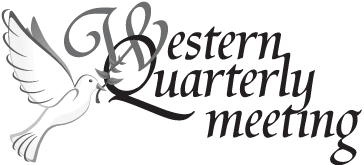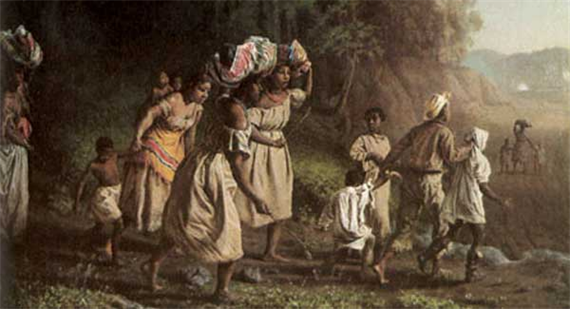So I recently discovered, that the side of the 300year old facing benches at the Old Kennett Meetinghouse can be easily removed with mouldings intact to reveal what appears to be an entrance to an area below the meetinghouse which appears to be an Underground Railroad Station.
Tomorrow is the first time we normally have our annual meetings for worshop at Old Kennett so it will be the first time members of Kennett Meeting and the public will be able to see this new discovery.
I’m writing to invite you, and more importantly, try to get in touch with any Underground Railroad archeologists that could authenticate or disproove this find.
Old Kennett Meeting meets on the last Sunday of June, July and August at11am located on Rte 1 in Chadds Ford Pa at the entrance to Kendal at Longwood. 1109 East Baltimore Pike, Chadds Ford, PA
*This was a note Lars Farmer of Kennett Friends Meeting posted to our Facebook page.
If you’d like to get in touch with Lars, contact us and we’ll connect you.
…
The Response from Chris Densmore, Curator of the Friends Historical Library at Swarthmore College
“I had a chance to see the space in Old Kennett this morning. If you remove the panels from the side of the facing benches, you do have access to a crawl space under the building. The space is big enough to have hidden quite a number of people.
1. The space I saw seemed perfectly normal. Basically, you don’t want to put a wooden building directly on the ground. The wood will rot in a few years. Unless you want to build a basement, what you have is a few feet of essentially wasted space between the lowest floor and the foundations of the building. In this case, the very large beams running the long way are on stone foundations a foot or more above the ground level. The pieces running the short way are supporting the floor and whatever interior posts the meeting house might have. Normal construction.
Think about it. In most houses you have to walk up stairs before entering on the “ground floor” which is actually off the ground.
2. COULD freedom seekers hide in this space? Certainly, but unless there is documentation that they actually did so, this is only speculation.
3. When someone tells me about a building that was supposed to have been used to hide fugitives, I have two questions. First, when was the building erected? Surprisingly a lot of claimed sites turn out to be in buildings that were not built until after the end of slavery. This is obviously not the case with Old Kennett. Second, who lived in or used the building? Quakers by the 1770s were absolutely opposed to slavery and did not tolerate slave-owners as members. A number of members of Kennett were known to have been involved with the Underground Railroad and/or Anti-Slavery. This would strengthen the case for Old Kennett as a refuge, but to make the case in the first place requires some documentation.
If I was doing a tour of the building, I probably would talk about Quakers being anti-slavery and some of the Kennett members being involved in the Underground Railroad. I might give some examples of peoples and places known to have been involved. I wouldn’t bring up the meetinghouse being used as a refuge because there is no [direct] evidence that it did. If someone asks a question about whether the meetinghouse was used, I’d have to say that there is no documentation that it was. If I were really pressed, I would probably say that it is a possibility. I’d love to find documentation that it was used to hide freedom seekers…
4. If a slave hunter was looking in Old Kennett for runaways, and if he were at all diligent, he would know that there was a space underneath the floor.
5. I think it unlikely that fugitives would have been put in a public building, but I have also learned the Underground Railroad has lots of very unlikely stories, and many of them turn out to be true. I would, however, be very interested in dating the habitation and seeing what other evidence there might be. A fragment of cloth of the type worn by enslaved people would be very, very interesting. An empty bottle of Miller Light or an empty carton of Virginia Slims would be not so very interesting.
6. Even if you found evidence that somebody had stayed there, it could have been homeless people or neighborhood children or anything.
Anyway, all very interesting. Those beams under the floor are quite massive.”
– Chris Densmore
Curator, Friends Historical Library at Swarthmore College
*This response was copy-edited.


Comments are closed.